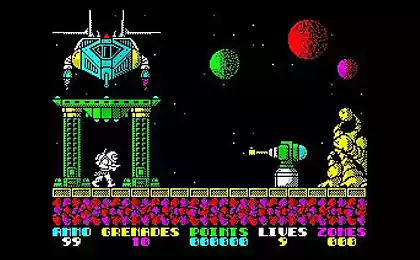683
Zx Spectrum - remember the classics!
Who was that? Everyone remembers?
Today's young people, and is not that the game had to be downloaded from the audio cassette and 48 kb operatives - it was the top dream))))
ZX Spectrum - a personal computer, created by the British company Sinclair Research Ltd microprocessor Z80 firm Zilog.
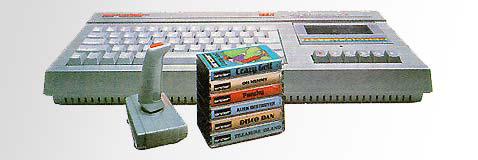
ZX Spectrum was the most popular computer of the 1980s in Europe. Due to the low cost - (£ 125 for a model with 16 KB of memory, and 175 pounds with 48 KB) - after 17 months of sales has sold more than a million of these machines. Low cost computer achieved a number of components: technology ULA (Uncommitted Logic Array), through which most of the circuits housed in a single chip; low technical and user characteristics compared to more expensive computers at that time; using domestic TV as a monitor and cassette tape recorder as an external drive.
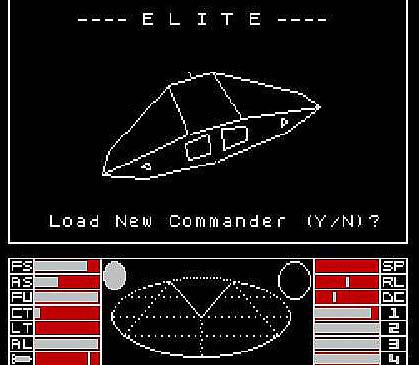
The first ZX Spectrum appeared in the USSR in the late 1980s and quickly gained popularity thanks to color, music features and, most importantly, the abundance of games. Caught in the USSR are most likely from Poland, at least in the first game and the documentation were the notes in Polish.

Sinclair ZX80 was released in February 1980 and was worth 79, £ 95 a set for assembly and 99, £ 95 in finished form. It was the world's first computer costing less than £ 100. Its dimensions were 9 "× 7" × 2 "(218 × 170 × 50 mm) and weighed 340 grams.
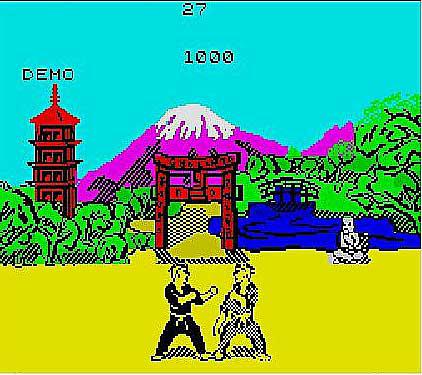
Standard ZX Spectrum 48 had a 16 KB ROM (subsequent models and clones could have more), to which was sewn a very successful (for computers of this class) "Oxford" dialect of BASIC, called Sinclair BASIC. The same program ROM provides the basic input-output and user interface. The BIOS as such, there was no systemic treatments (such as printing on screen) it was possible to take advantage of native code, just calling them by absolute addresses. In this connection, the computer architects adopted a policy not to change the firmware, even for the purpose of correcting errors (of which there were many). In addition, the case was complicated by the fact that the ROM code developed by third-party Nine Tiles Ltd. However, many "clones" had a modified "firmware" - in particular, with the Russified keyboard. There were even versions with switched "on the fly" (the so-called "shadow") ROM. Location of this "operating system" and programming language in a non-volatile memory provided restart your computer less than a second.
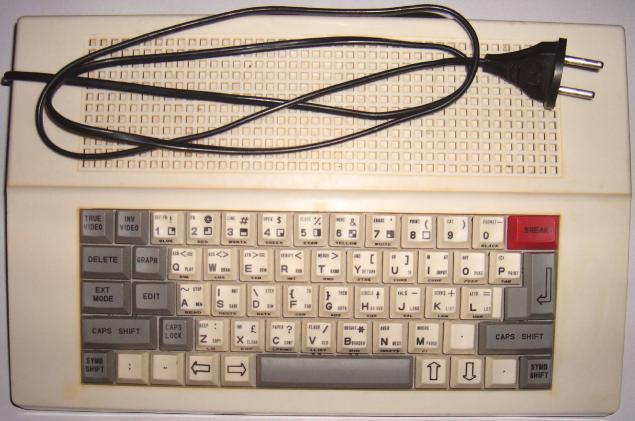
The keyboard deserves a separate description. A characteristic feature of the ZX Spectrum was the versatility of each key (despite the fact that all the keys in the standard version is only 40). Each key had five values selected by a cursor mode. These modes are: L - for entering lower-case letters; C - to enter capital letters; K - to enter the main keyword BASIC; E - to enter additional keywords and operators; and G - to enter pseudographic, control characters and symbols, user-defined. Mode is displayed directly in the familiarity of the cursor and switch either automatically or with the control keys and the Caps Shift Symbol Shift. For example, at the beginning of a set of BASIC is waiting for the command, because the cursor is in K. Pressing the key «G» in this mode will lead to an automatic entry operator GO TO. After that, the cursor will go to L mode and allow dial number, the variable name to spell or mathematical expression (including via E mode). Location operators of the language on the keys and cursor mode has been thought out so that to enter a syntactically incorrect expression was difficult. Despite the apparent complexity, with a little practice typing program could be very fast. Older models (with 128 KB of memory, and more) allow, alternatively, the gain language commands on spell (only in the expanded mode).
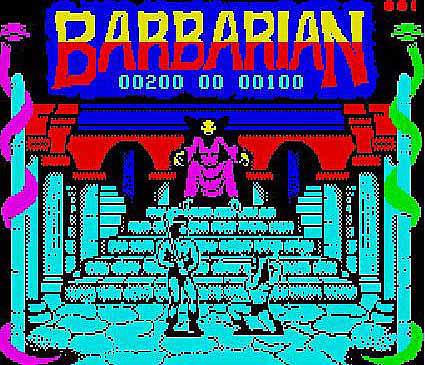
No less typical was the only graphics mode the computer. Colors (8 colors and two brightness levels, plus attribute flicker) and the actual graphics are stored in different memory locations. At the same time, although the graphics resolution is 256 × 192 pixels, color attributes were set by familiarity. Each familiarity 8 × 8 pixels could be assigned to it only two colors (and only one attribute brightness and flicker). Thus, the area of 8 × 8 pixels coded by nine bytes of RAM (8 bytes - the one-bit picture is 8 × 8 pixels, 1 byte - attributes of color: three bit color mark 3 bits background color, 1 bit higher brightness and 1 bit flicker familiarity). This organization was a graceful exit with such a rigid hardware limitations (the entire screen area covers less than 7 KB of memory!), Allowing, with a creative approach to program a 16-color graphics very effectively.
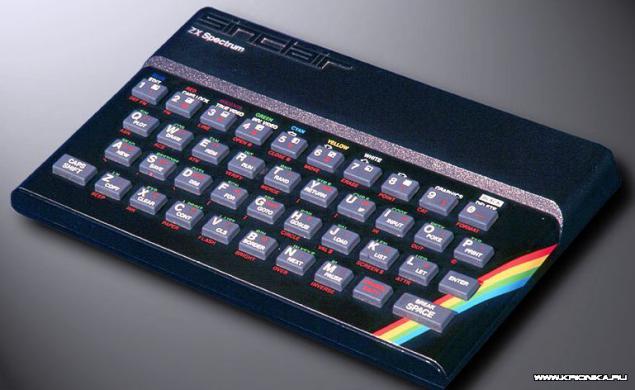
The first model ZX Spectrum had a one-bit audio output. Play music, especially polyphonic, it required the use of almost all the processor time, because the sound is generated entirely in software. The model ZX Spectrum 128 was added sound chip AY-3-8910, allowing trёhgolosuyu play music without consuming CPU time. Connecting this chip is also possible for 48K models.
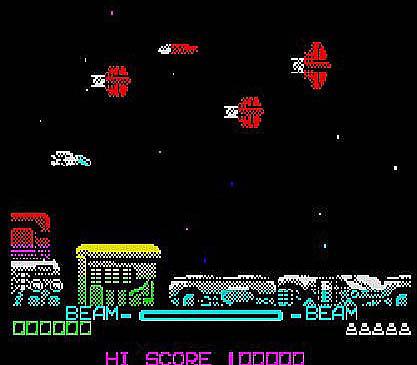
Immediately there was an idea to make a clone computer to the Soviet element base. The problem was that the "heart" of the computer, the Z80 in the CCCR at that point was not made and had to be imported from abroad. The remaining components Soviet industry of the 1990s, fortunately released. After some time, the domestic electronics industry has adjusted release of clones processor Z80: T34VM1 and KR1582VM1.
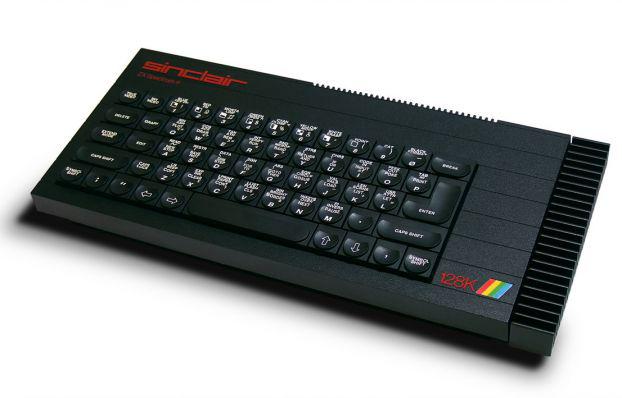
Source:
Today's young people, and is not that the game had to be downloaded from the audio cassette and 48 kb operatives - it was the top dream))))
ZX Spectrum - a personal computer, created by the British company Sinclair Research Ltd microprocessor Z80 firm Zilog.

ZX Spectrum was the most popular computer of the 1980s in Europe. Due to the low cost - (£ 125 for a model with 16 KB of memory, and 175 pounds with 48 KB) - after 17 months of sales has sold more than a million of these machines. Low cost computer achieved a number of components: technology ULA (Uncommitted Logic Array), through which most of the circuits housed in a single chip; low technical and user characteristics compared to more expensive computers at that time; using domestic TV as a monitor and cassette tape recorder as an external drive.

The first ZX Spectrum appeared in the USSR in the late 1980s and quickly gained popularity thanks to color, music features and, most importantly, the abundance of games. Caught in the USSR are most likely from Poland, at least in the first game and the documentation were the notes in Polish.

Sinclair ZX80 was released in February 1980 and was worth 79, £ 95 a set for assembly and 99, £ 95 in finished form. It was the world's first computer costing less than £ 100. Its dimensions were 9 "× 7" × 2 "(218 × 170 × 50 mm) and weighed 340 grams.

Standard ZX Spectrum 48 had a 16 KB ROM (subsequent models and clones could have more), to which was sewn a very successful (for computers of this class) "Oxford" dialect of BASIC, called Sinclair BASIC. The same program ROM provides the basic input-output and user interface. The BIOS as such, there was no systemic treatments (such as printing on screen) it was possible to take advantage of native code, just calling them by absolute addresses. In this connection, the computer architects adopted a policy not to change the firmware, even for the purpose of correcting errors (of which there were many). In addition, the case was complicated by the fact that the ROM code developed by third-party Nine Tiles Ltd. However, many "clones" had a modified "firmware" - in particular, with the Russified keyboard. There were even versions with switched "on the fly" (the so-called "shadow") ROM. Location of this "operating system" and programming language in a non-volatile memory provided restart your computer less than a second.

The keyboard deserves a separate description. A characteristic feature of the ZX Spectrum was the versatility of each key (despite the fact that all the keys in the standard version is only 40). Each key had five values selected by a cursor mode. These modes are: L - for entering lower-case letters; C - to enter capital letters; K - to enter the main keyword BASIC; E - to enter additional keywords and operators; and G - to enter pseudographic, control characters and symbols, user-defined. Mode is displayed directly in the familiarity of the cursor and switch either automatically or with the control keys and the Caps Shift Symbol Shift. For example, at the beginning of a set of BASIC is waiting for the command, because the cursor is in K. Pressing the key «G» in this mode will lead to an automatic entry operator GO TO. After that, the cursor will go to L mode and allow dial number, the variable name to spell or mathematical expression (including via E mode). Location operators of the language on the keys and cursor mode has been thought out so that to enter a syntactically incorrect expression was difficult. Despite the apparent complexity, with a little practice typing program could be very fast. Older models (with 128 KB of memory, and more) allow, alternatively, the gain language commands on spell (only in the expanded mode).

No less typical was the only graphics mode the computer. Colors (8 colors and two brightness levels, plus attribute flicker) and the actual graphics are stored in different memory locations. At the same time, although the graphics resolution is 256 × 192 pixels, color attributes were set by familiarity. Each familiarity 8 × 8 pixels could be assigned to it only two colors (and only one attribute brightness and flicker). Thus, the area of 8 × 8 pixels coded by nine bytes of RAM (8 bytes - the one-bit picture is 8 × 8 pixels, 1 byte - attributes of color: three bit color mark 3 bits background color, 1 bit higher brightness and 1 bit flicker familiarity). This organization was a graceful exit with such a rigid hardware limitations (the entire screen area covers less than 7 KB of memory!), Allowing, with a creative approach to program a 16-color graphics very effectively.

The first model ZX Spectrum had a one-bit audio output. Play music, especially polyphonic, it required the use of almost all the processor time, because the sound is generated entirely in software. The model ZX Spectrum 128 was added sound chip AY-3-8910, allowing trёhgolosuyu play music without consuming CPU time. Connecting this chip is also possible for 48K models.

Immediately there was an idea to make a clone computer to the Soviet element base. The problem was that the "heart" of the computer, the Z80 in the CCCR at that point was not made and had to be imported from abroad. The remaining components Soviet industry of the 1990s, fortunately released. After some time, the domestic electronics industry has adjusted release of clones processor Z80: T34VM1 and KR1582VM1.

Source:







